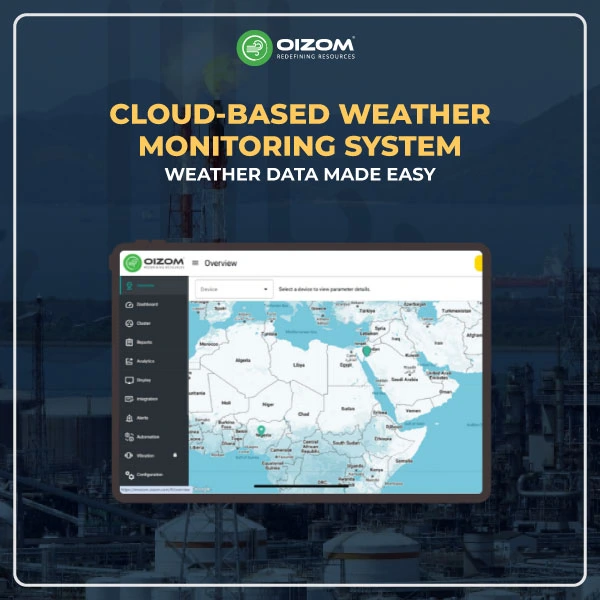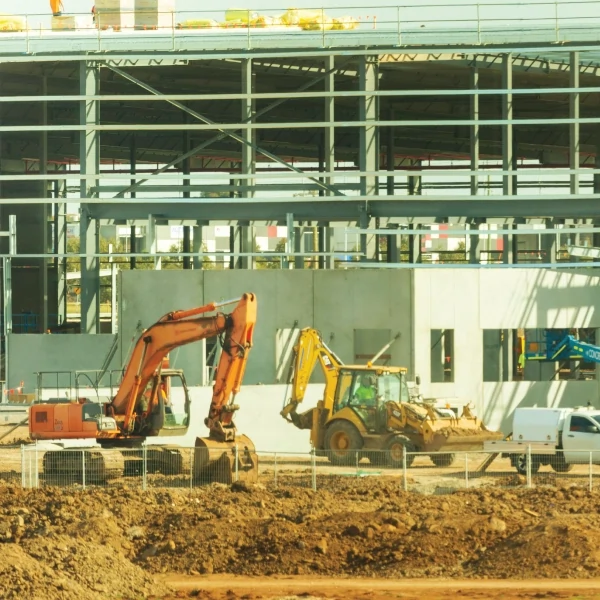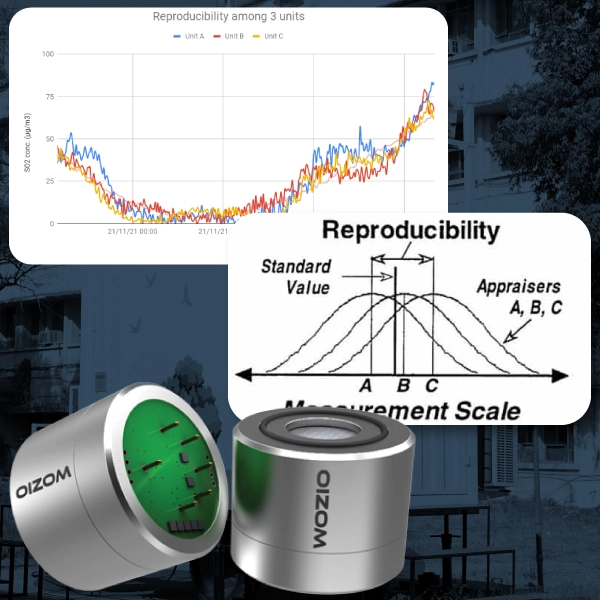- Real-Time Weather Updates: Cloud-based IoT systems provide instant access to accurate weather data, improving decision-making for businesses and individuals.
- Enhanced Forecasting Accuracy: Advanced technologies like cloud computing and AI enable precise weather predictions, ensuring preparedness for extreme weather events.
- Cost-Effective Solution: Eliminates the need for expensive hardware by taking advantage of cloud infrastructure, making it affordable and scalable.
- Seamless Integration: Easily integrates with industrial systems like SCADA and IoT platforms for streamlined operations.
- Versatile Monitoring: Measures diverse parameters, including temperature, wind, humidity, particulate matter, and harmful gases, catering to various industries.
- Collaboration and Accessibility: Enables global data sharing among meteorologists and stakeholders, improving forecasting accuracy and response.
- Eco-Friendly Technology: Reduces energy consumption by offloading infrastructure maintenance to cloud providers, supporting sustainable operations.
- Industries Benefiting: Key sectors like manufacturing, agriculture, aviation, energy, and insurance gain efficiency and safety from cloud-based weather monitoring.
- Ease of Maintenance: Cloud solutions ensure high availability, automatic updates, and minimal downtime, simplifying operations.
- Impact on Society: Accurate weather data enhances disaster preparedness, agricultural planning, aviation safety, and industrial efficiency, fostering resilience and sustainability worldwide.
Cloud-Based Weather Monitoring System: Weather Data Made Easy
Imagine having real-time weather updates right at your fingertips, no matter where you are. Gone are the days when you had to rely on local news, radio stations, or aviation weather services to plan your day. Now, a quick look at your smartphone is all it takes to stay informed. That’s the power of modern technology, and cloud-based weather monitoring systems are at the core of this transformation.
These systems collect weather data from sensors and upload it to the cloud, allowing instant access to accurate, real-time information. Whether it’s temperature, humidity, wind speed, or rainfall, the data is always reliable and easy to access. For industries, researchers, and even weather enthusiasts, this level of accuracy creates a new level.
With the growing need for accurate environmental monitoring, weather stations are evolving rapidly to meet both personal and professional demands. They are adapting to account for crucial factors like microclimates and small, localized weather patterns that can have a significant impact. This blog explores how cloud-based weather monitoring works, its key benefits, and why it’s transforming weather tracking for everyone. Let’s dive in!
How Cloud-Based Weather Monitoring Systems Work
Cloud-based weather monitoring systems use modern technology to provide accurate, real-time weather updates. They start by using sensors to collect data on weather conditions like temperature, humidity, wind speed, and rainfall. This data is sent to a cloud platform through wireless methods such as Wi-Fi, cellular networks, or LoRa.
Once in the cloud, the data is stored, processed, and made available through dashboards, apps, or APIs. Users can easily access live or past weather information anytime, from any location, on their devices. The system also analyzes patterns to provide useful insights and forecasts.
These systems are easy to set up, cost-effective, and require less maintenance compared to traditional weather monitoring methods. They are ideal for industries, researchers, and individuals who need reliable and convenient weather data for better decision-making and planning.
Components of a Weather Monitoring System
The weather monitoring system comprises various components, which are discussed below:
- Temperature and Humidity Sensors: Measure environmental temperature and humidity accurately.
- Barometric Sensors: Track atmospheric pressure for weather prediction.
- Wind Sensors: Measure wind speed (using ultrasonic or hot wire) and direction (using wind vanes or magnetic principles).
- Rain Sensors: Monitor precipitation levels.
- Air Quality Sensors: Detect pollutants like PM2.5, PM10, SO₂, and NOx.
- Harmful Gas Sensors: Measure gases like CO, H₂S, and CH₄.
- Solar Radiation Sensor: Track solar energy levels.
- Data Acquisition System: Collects and processes data from sensors.
- Data Transmission System: Sends data via wired (Ethernet) or wireless (Wi-Fi, 4G/5G, satellite) networks.
- Data Processing and Analysis Software: Analyzes data, generates reports, and supports decision-making.
- Power Supply System: Includes a primary power source and backups like batteries or solar panels for uninterrupted operation.
- Explosion-Proof Design (Optional): Features explosion-proof housing and connectors for safe use in hazardous environments.
Role of Cloud Computing in Weather Monitoring
Cloud computing plays a vital role in modern weather monitoring by improving how weather data is collected, stored, processed, and accessed.
Scalable Data Storage
Cloud computing provides the tools needed to store and process the large amounts of data generated by weather monitoring systems. With cloud-based solutions, meteorological agencies can easily scale up storage and computing resources as needed, especially during high-demand times like severe weather events.
No internet? No problem! The Oizom Weathercom now includes 8 GB of internal storage, allowing it to store weather data for up to 90 days, ensuring uninterrupted data logging even without cloud connectivity.
Collaborative Platforms
Cloud platforms make it easier for meteorologists, researchers, and other experts to work together. By sharing data and resources on the cloud, teams can collaborate more effectively, leading to more accurate and reliable weather forecasts. This approach is especially useful for global weather prediction models, which rely on data from multiple sources.
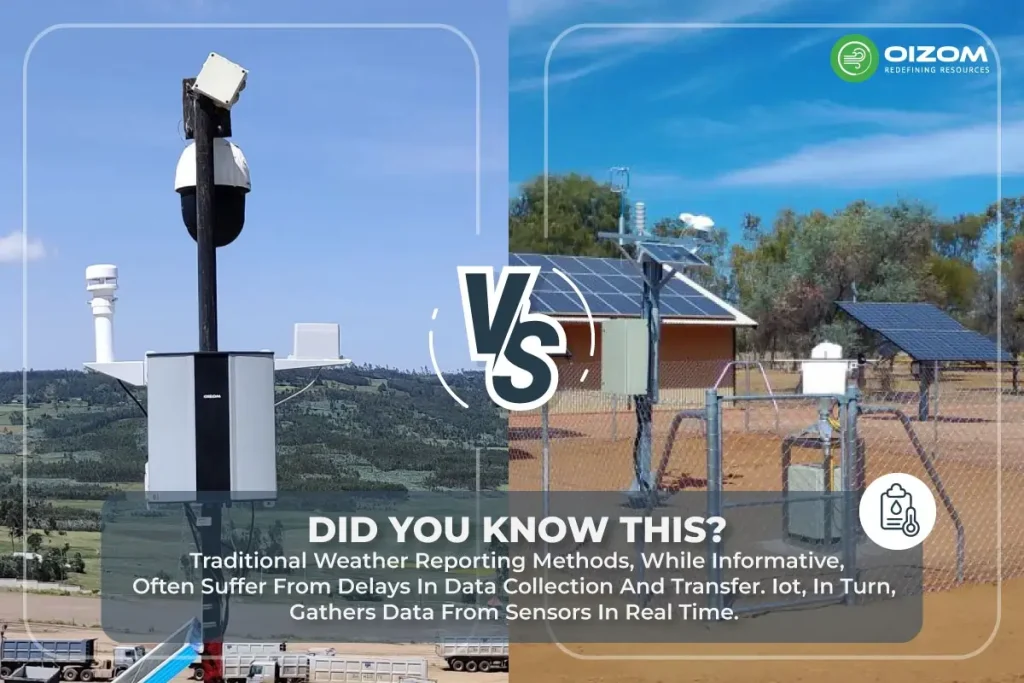
Key Features of Cloud-Based Weather Monitoring Systems
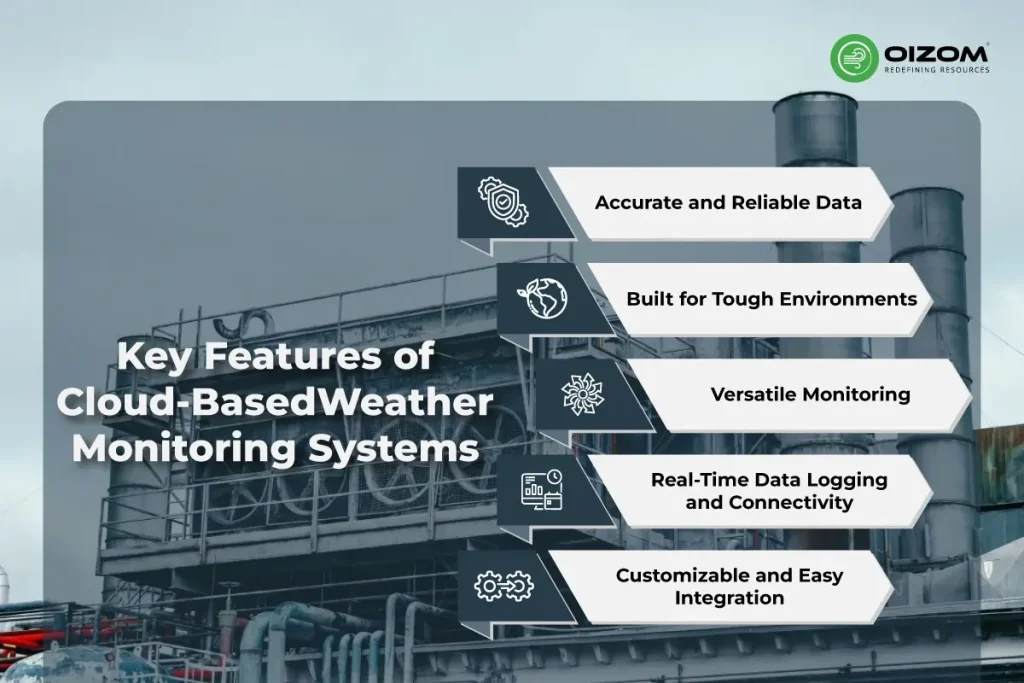
- Accurate and Reliable Data: Cloud-based weather monitoring systems deliver precise and reliable weather information, enabling industries, farmers, and researchers to make critical decisions.
- Built for Tough Environments: These systems are designed to operate seamlessly in extreme conditions, including high or low temperatures, high humidity, and exposure to corrosive elements, ensuring durability and long-term performance.
- Versatile Monitoring: Beyond standard weather parameters like temperature, wind speed, and humidity, cloud-based systems can measure additional metrics such as particulate matter, hazardous gases, and even radiation, catering to diverse industrial and environmental needs.
- Real-Time Data Logging and Connectivity: These systems continuously log weather data and transmit it in real-time to cloud platforms, providing constant access to critical insights from anywhere, anytime.
- Customizable and Easy Integration: Cloud-based weather monitoring systems can be customized to meet specific requirements and easily integrate with existing industrial frameworks, such as SCADA or IoT platforms, ensuring seamless operations and enhanced efficiency.
Benefits and use cases of cloud-based weather monitoring system
- Cost-Effective Solution: Reduces the need for costly hardware and software by taking advantage of cloud infrastructure, making it an affordable option for meteorological organizations.
- Scalable and Flexible: Adapts to varying computational needs, enabling real-time processing of vast datasets. This ensures accurate and timely forecasts, even during high-demand situations like extreme weather events.
- Enhanced Collaboration: Facilitates seamless data sharing among meteorologists globally, enabling teams to work together on more comprehensive and precise weather models.
- Real-Time Accessibility: Provides instant access to forecasting data from anywhere, allowing meteorologists to respond quickly to changing weather patterns and share updates with stakeholders.
- Improved Forecasting Accuracy: Utilizes powerful cloud computing resources to run complex simulations and analyze extensive data, enhancing the precision and reliability of weather predictions.
- Ease of Maintenance: Offloads the burden of maintaining physical infrastructure to cloud service providers, ensuring high availability, automatic updates, and minimal downtime.
- Eco-Friendly Operations: Reduces the energy consumption and environmental impact associated with maintaining large-scale data centers, contributing to greener forecasting practices.
- Integration with Advanced Technologies: Supports the integration of AI, machine learning, and big data analytics, further boosting the speed and accuracy of weather forecasting models.
Industries That Benefit from Cloud-based Weather Monitoring Systems
- Manufacturing: Weather conditions directly impact production processes. IoT helps optimize manufacturing by managing temperature-sensitive materials, improving logistics, and ensuring operations align with favorable weather conditions.
- Aviation: Real-time weather updates via IoT improve flight safety by providing accurate data on turbulence, lightning, and visibility, aiding airlines and air traffic control in making informed decisions.
- Agriculture: Farmers use IoT-based weather insights to plan planting, irrigation, and pest control. Real-time data on rainfall, temperature, and soil moisture helps maximize crop yield and efficiency.
- Automotive: IoT enhances road safety by supporting advanced driver assistance systems. It provides data on slippery roads, low visibility, and other conditions, helping vehicles adapt to weather challenges.
- Warehouse Management: IoT systems help warehouses adjust storage conditions and shipping schedules by predicting severe weather, protecting inventory, and streamlining logistics.
- Energy: The energy sector uses IoT to optimize grid performance and resource allocation. By analyzing weather patterns, it predicts energy demand for both renewable and non-renewable sources, improving efficiency.
- Insurance: IoT aids insurers in assessing weather-related risks like floods or hurricanes, allowing them to price policies accurately and offer better risk management solutions for industries and individuals.
Find out how the Advanced Institute for Wildlife Conservation used Oizom Weathercom to monitor weather conditions, improve research, and boost their conservation efforts.
Conclusion
If you’re tired of unexpected weather disrupting your business operations, a cloud-based IoT weather monitoring system is your solution. This technology provides real-time data collection, enhanced forecasting accuracy, and seamless integration with your processes, helping you stay prepared and optimize operations.
In conclusion, the shift to cloud-based weather monitoring and forecasting systems has revolutionized the way we predict and respond to weather events. By leveraging advanced technologies like IoT, cloud computing, and AI, these systems offer unparalleled accuracy and reliability. From disaster preparedness and agricultural planning to aviation safety and industrial efficiency, accurate weather data has a transformative impact on society.
Just as balancing AI and sustainability in data centers demonstrates the importance of aligning innovation with environmental responsibility, cloud-based weather monitoring reflects how technology can drive both operational efficiency and long-term sustainability. As these technologies continue to advance, meteorologists and industries are equipped to deliver even more precise, timely forecasts, ensuring safety, sustainability, and resilience for communities worldwide.

